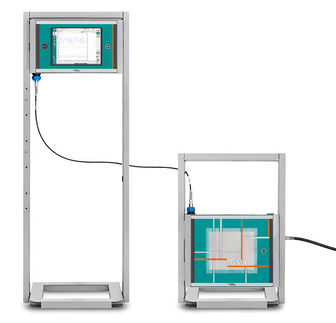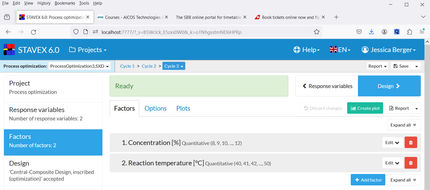A downloadable version [1] of the BBCH Scales, including illustrations, is available from the BBA [2] (Federal Biological Research Centre for Agriculture and Forestry)
Phenological growth stages and BBCH-identification keys of faba bean
|
| Code
| Description
|
| Principal growth stage 0: Germination
|
| 00 | Dry seed
|
| 01 | Beginning of seed imbibition
|
| 03 | Seed imbibition complete
|
| 05 | Radicle emerged from seed
|
| 07 | Shoot emerged from seed (plumule apparent)
|
| 08 | Shoot growing towards soil surface
|
| 09 | Emergence: shoot emerges through soil surface
|
| Principal growth stage 1: Leaf development1
|
| 10 | Pair of scale leaves visible (may be eaten or lost)
|
| 11 | First leaf unfolded
|
| 12 | 2 leaves unfolded
|
| 13 | 3 leaves unfolded
|
| 1 . | Stages continuous till . . .
|
| 19 | 9 or more leaves unfolded
|
| Principal growth stage 2: Formation of side shoots
|
| 20 | No side shoots
|
| 21 | Beginning of side shoot development: first side shoot detectable
|
| 22 | 2 side shoots detectable
|
| 23 | 3 side shoots detectable
|
| 2 . | Stages continuous till . . .
|
| 29 | End of side shoot development: 9 or more side shoots detectable
|
| Principal growth stage 3: Stem elongation
|
| 30 | Beginning of stem elongation
|
| 31 | One visibly extended internode2
|
| 32 | 2 visibly extended internodes
|
| 33 | 3 visibly extended internodes
|
| 3 . | Stages continuous till . . .
|
| 39 | 9 or more visibly extended internodes
|
| Principal growth stage 5: Inflorescence emergence
|
| 50 | Flower buds present, still enclosed by leaves
|
| 51 | First flower buds visible outside leaves
|
| 55 | First individual flower buds visible outside leaves but still closed
|
| 59 | First petals visible, many individual flower buds, still closed
|
| Principal growth stage 6: Flowering
|
| 60 | First flowers open
|
| 61 | Flowers open on first raceme
|
| 63 | Flowers open 3 racemes per plant
|
| 65 | Full flowering: flowers open on 5 racemes per plant
|
| 67 | Flowering declining
|
| 69 | End of flowering
|
| Principal growth stage 7: Development of fruit
|
| 70 | First pods have reached final length (“flat pod”)
|
| 71 | 10% of pods have reached final length
|
| 72 | 20% of pods have reached final length
|
| 73 | 30% of pods have reached final length
|
| 74 | 40% of pods have reached final length
|
| 75 | 50% of pods have reached final length
|
| 76 | 60% of pods have reached final length
|
| 77 | 70% of pods have reached final length
|
| 78 | 80% of pods have reached final length
|
| 79 | Nearly all pods have reached final length
|
| Principal growth stage 8: Ripening
|
| 80 | Beginning of ripening: seed green, filling pod cavity
|
| 81 | 10% of pods ripe, seeds dry and hard
|
| 82 | 20% of pods ripe, seeds dry and hard
|
| 83 | 30% of pods ripe and dark, seeds dry and hard
|
| 84 | 40% of pods ripe and dark, seeds dry and hard
|
| 85 | 50% of pods ripe and dark, seeds dry and hard
|
| 86 | 60% of pods ripe and dark, seeds dry and hard
|
| 87 | 70% of pods ripe and dark, seeds dry and hard
|
| 88 | 80% of pods ripe and dark, seeds dry and hard
|
| 89 | Fully ripe: nearly all pods dark, seeds dry and hard
|
| Principal growth stage 9: Senescence
|
| 93 | Stems begin to darken
|
| 95 | 50% of stems brown or black
|
| 97 | Plant dead and dry
|
| 99 | Harvested product
|
1 Stem elongation may occur earlier than stage 19; in this case continue with the principal stage 3
2 First internode extends from the scale leaf node to the first true leaf node







